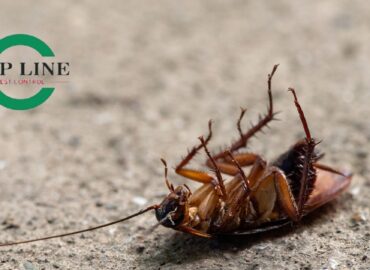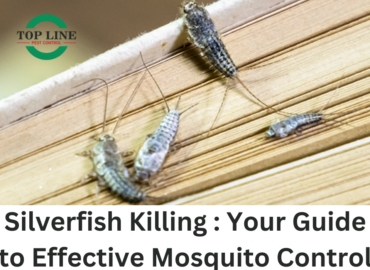When it comes to keeping your kitchen safe and hygienic, protecting it from pantry pests is a top priority. Pantry pests, like flour beetles and Indian meal moths, can invade dry goods and contaminate your food supply. With the right knowledge and strategies, you can ensure a pest-free pantry. Let’s dive into How to Keep Your Kitchen Free from Pantry Pests.

How to Keep Your Kitchen Free from Pantry Pests: Understanding Pantry Pests
What Are Pantry Pests?
Pantry pests are tiny insects that infest dry food items such as flour, cereal, grains, and nuts. Common pantry pests include:
- Flour beetles: Often found in flour and other dry goods.
- Indian meal moths: Known for contaminating grains and dried fruits.
These pests can spread quickly, making it essential to identify and control infestations early.
Keeping Your Kitchen Free from Pantry Pests – Overview Table
| Topic | Key Points |
|---|---|
| Understanding Pantry Pests | Common pests include flour beetles and Indian meal moths. Look for signs like webbing or odors. |
| Proper Food Storage | Use airtight containers, avoid original packaging, and rotate food to check expiration dates. |
| Cleaning and Maintenance | Regularly clean shelves and floors, inspect food packaging, and manage crumbs and spills. |
| Preventative Measures | Seal entry points, use natural deterrents like bay leaves, and consider professional help. |
| Addressing Infestations | Discard infested items, deep clean the pantry, and sanitize affected areas. |
| Long-Term Strategies | Inspect food routinely, invest in pest-resistant containers, and maintain pantry hygiene. |
Signs of Pantry Pests
Look for these signs to detect an infestation:
- Small insects crawling in food containers.
- Webbing in corners of packages (a sign of Indian meal moths).
- Unpleasant odors from infested food.
Proper Food Storage to Prevent Pantry Pests
Store Food Properly
Proper storage is the first line of defense against pantry pests. Follow these tips:
- Use airtight containers for dry goods like flour, cereal, rice, and sugar. Glass or heavy-duty plastic containers work best.
- Avoid leaving food in its original packaging, as pests can easily chew through paper or cardboard.
- Rotate food items frequently, using older products before newer ones, and check expiration dates to prevent spoilage.
Organizing Pantry Shelves
A well-organized pantry makes it easier to spot and address potential problems. Here’s how:
- Keep similar items grouped together for quick inspection.
- Ensure shelves are dry and free from moisture.
Handling Pet Food
Pet food can attract pests if not stored correctly. Use sealed containers to store pet food and avoid leaving it open for long periods.
Cleaning and Maintenance: Keeping Pests at Bay
Regular Cleaning of Floors and Shelves
- Wipe down pantry shelves regularly with a mild soap solution.
- Sweep and vacuum floors to remove crumbs and spills that can attract pests.
Inspect Food Products
Before bringing food home, inspect packaging for:
- Tears or holes.
- Webbing or other signs of pest activity.
Managing Crumbs and Spills
Even small crumbs can invite pests. Be proactive by:
- Cleaning up spills immediately.
- Using mats or liners on pantry shelves for easy cleanup.
Preventative Measures to Keep a Pest-Free Pantry
Seal Entry Points
Prevent pests from entering your pantry by sealing cracks and gaps around doors, windows, and walls. Use caulk or weatherstripping to close off potential entryways.
Use Natural Deterrents
Natural repellents like bay leaves and cinnamon can help deter pantry pests. Place these in food storage areas for an added layer of protection.
Professional Help
If an infestation becomes unmanageable, consider contacting pest management experts. Companies like Topline Pest Control can provide effective solutions tailored to your needs.
Addressing an Infestation
Steps to Take if You Spot Pantry Pests
- Identify the source of the infestation by inspecting all food items.
- Remove and discard any infested products immediately.
Discarding Infested Items
Seal infested food in plastic bags before discarding to prevent pests from spreading.
Deep Cleaning
After discarding contaminated food, thoroughly clean pantry shelves and containers. Use a vacuum to remove hidden pests and a disinfectant to sanitize surfaces.
Long-Term Strategies for a Pest-Free Kitchen
Routine Inspection of Food Products
Make it a habit to inspect food items and packaging regularly. Check for damage, pests, or unusual odors.
Use Pest-Resistant Storage Solutions
Invest in high-quality, pest-resistant containers for storing dry goods. These containers prevent pests from accessing food and ensure longer shelf life.
Monitoring and Maintenance
Continue monitoring your pantry and practicing good hygiene to maintain a pest-free environment. Regular cleaning and prompt action can make a significant difference.
Conclusion
Keeping your kitchen free from pantry pests requires consistent effort and smart strategies. By focusing on proper food storage, cleaning, and preventative measures, you can protect your food and ensure a healthy, pest-free environment. Don’t let pantry pests disrupt your kitchen—take action today to safeguard your home. If you’re facing a persistent pest problem, contact Topline Pest Control for expert assistance and a lasting solution!




